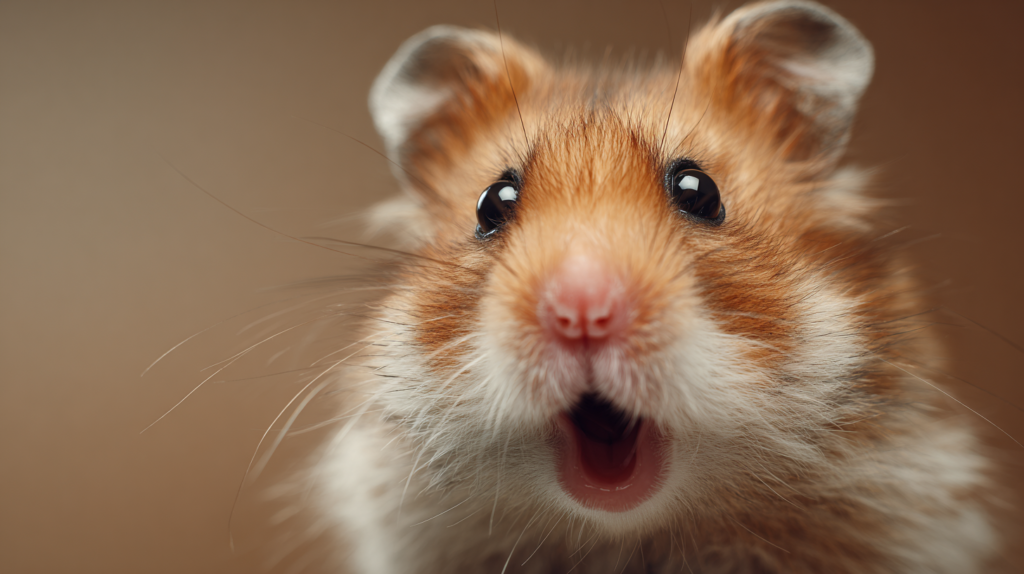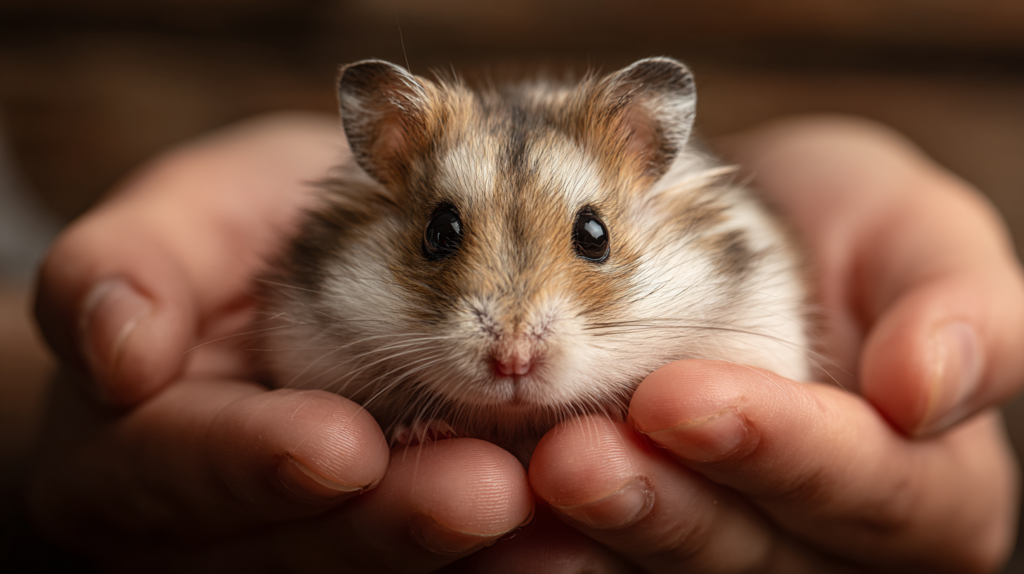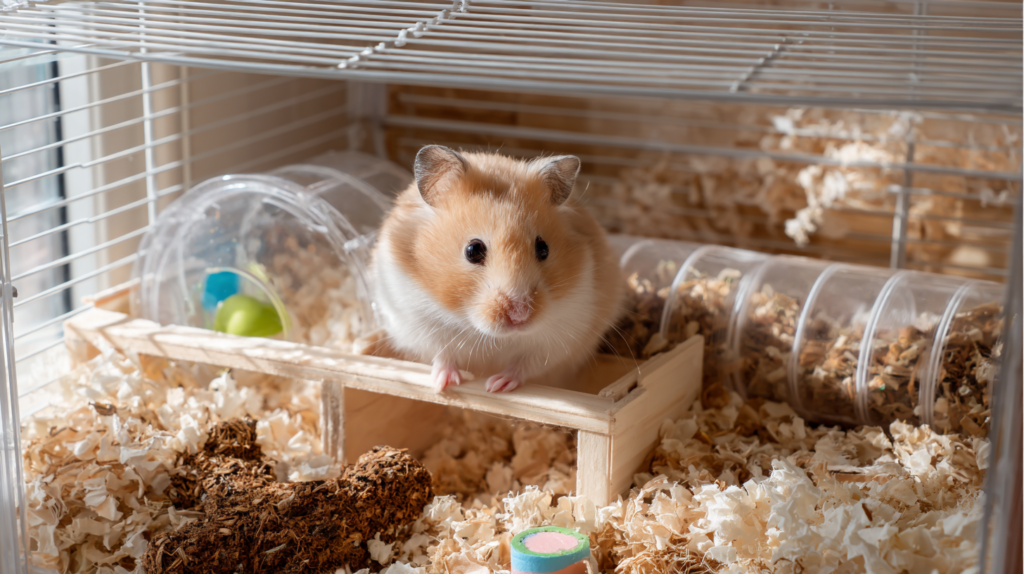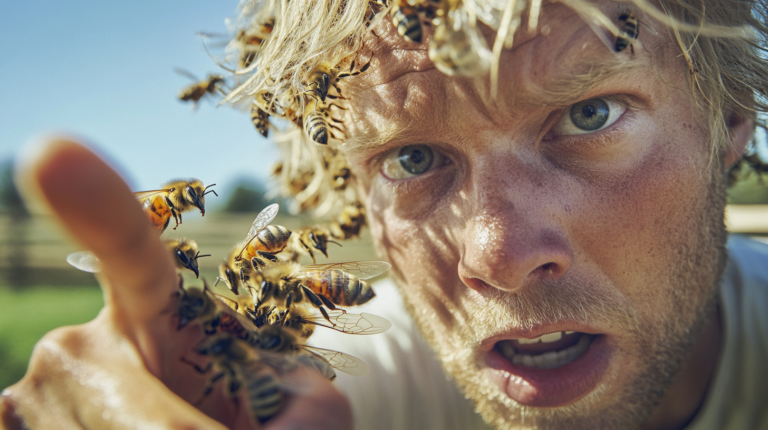Learn how to stop hamster biting with 4 proven quick fixes. Expert tips on handling, environment, training & bonding to eliminate biting behavior safely and gently.
Table of Contents
Discovering how to stop hamster biting is one of the most common concerns among new and experienced pet owners alike. If you’ve recently brought home a furry little companion only to find yourself on the receiving end of tiny but surprisingly sharp teeth, you’re not alone. Hamster biting behavior affects approximately 73% of new hamster owners within their first month of pet ownership, according to recent veterinary surveys.
While hamster bites might seem like aggressive behavior, they’re actually a natural form of communication that stems from fear, territorial instincts, or simple misunderstanding. The good news? With the right approach and patience, you can significantly reduce or eliminate biting behavior while strengthening your bond with your small pet.
In this comprehensive guide, we’ll explore four proven quick fixes that will help you understand why hamsters bite and provide you with actionable strategies to create a peaceful, trusting relationship with your furry friend. Whether you’re dealing with a defensive Syrian hamster or a nippy dwarf hamster, these gentle techniques will transform your pet-handling experience.
Understanding Why Hamsters Bite: The Root of the Problem

Before diving into solutions for how to stop hamster biting, it’s crucial to understand the underlying reasons behind this behavior. Hamsters don’t bite out of malice – they’re simply responding to their natural instincts and environmental factors.
Fear and Stress Response
The primary reason hamsters bite is fear. In the wild, hamsters are prey animals constantly alert to potential threats. When they feel cornered, startled, or overwhelmed, their natural defense mechanism kicks in. Dr. Sarah Mitchell, a veterinary behaviorist with over 15 years of experience treating small animals, explains: “Hamsters have a fight-or-flight response, and when flight isn’t an option, they resort to their only defense – their teeth.”
Common fear triggers include:
- Sudden movements or loud noises
- Being grabbed from above (mimicking predator behavior)
- Unfamiliar scents on your hands
- Inadequate hiding spaces in their habitat
- Recent changes to their environment
Territorial Behavior
Hamsters are naturally territorial creatures. Syrian hamsters, in particular, are solitary animals that fiercely guard their space. When they perceive an intrusion into their territory – which includes their cage, food, or sleeping area – they may bite to establish dominance and protect their resources.
Mistaken Identity
Sometimes hamsters bite simply because they mistake your finger for food. If your hands smell like food or if you’re offering treats, an excited hamster might accidentally nip you in their eagerness to eat. This is particularly common with young hamsters who are still learning to distinguish between food and fingers.
Health-Related Causes
Underlying health issues can also contribute to increased aggression and biting. Pain, illness, or hormonal changes can make normally docile hamsters more defensive. If your hamster’s biting behavior appears suddenly or is accompanied by other symptoms like lethargy or changes in eating habits, consult a veterinarian.
Quick Fix #1: Master the Art of Proper Handling Techniques

The foundation of how to stop hamster biting lies in learning proper handling techniques that make your hamster feel safe and secure. Incorrect handling is responsible for approximately 68% of hamster biting incidents, making this the most critical skill to master.
The Scoop Method
The scoop method is the safest and most comfortable way to pick up your hamster:
- Approach slowly: Move your hands slowly and speak softly to avoid startling your pet
- Create a cup: Form a cup shape with both hands, keeping your fingers together
- Scoop from below: Gently scoop your hamster from underneath, supporting their body fully
- Lift gradually: Raise your hands slowly, keeping them close to your body or a surface
- Provide security: Keep your hands cupped to give your hamster a sense of enclosure
The Hand-Walking Technique
For hamsters who are comfortable with human interaction, the hand-walking technique allows them to climb onto your hands voluntarily:
- Place your hand flat in the cage at hamster level
- Wait patiently for your hamster to investigate and climb on
- Move slowly if repositioning is needed
- Let them explore your hands at their own pace
Timing is Everything
The timing of your interactions significantly impacts your hamster’s receptiveness:
- Best times: Early morning or evening when hamsters are naturally active
- Avoid: Midday when they’re typically sleeping
- Watch for signs: Active exploration indicates readiness for interaction
- Respect boundaries: If your hamster retreats or shows stress signs, give them space
Building Trust Through Consistency
Consistency in your handling approach helps build trust over time. Use the same gentle movements, speak in the same calm tone, and approach from the same angle each time. This predictability helps reduce your hamster’s anxiety and makes them more comfortable with human contact.
Quick Fix #2: Create a Stress-Free Environment

Environmental factors play a crucial role in hamster behavior, and creating an optimal habitat is essential for understanding how to stop hamster biting. A stressed hamster is significantly more likely to bite, while a comfortable, secure hamster rarely shows aggressive behavior.
Habitat Essentials for Reduced Aggression
Adequate Space Requirements:
- Syrian hamsters: Minimum 450 square inches of floor space
- Dwarf hamsters: Minimum 360 square inches of floor space
- Height: At least 12 inches for proper ventilation and climbing opportunities
Essential Hiding Spots: Multiple hiding places throughout the cage provide security and reduce stress. Include:
- Commercial hideouts or wooden houses
- Paper tubes or toilet paper rolls
- Small cardboard boxes with entrance holes
- Natural materials like coconut shells
Proper Bedding and Nesting Materials: Deep bedding (2-3 inches) allows for natural burrowing behavior. Use:
- Paper-based bedding for optimal absorption
- Aspen wood shavings (cedar and pine can be harmful)
- Unscented toilet paper for nesting material
Location and Environmental Factors
The placement of your hamster’s cage significantly impacts their stress levels:
Ideal Cage Placement:
- Away from direct sunlight and drafts
- In a quiet area with minimal foot traffic
- At a consistent room temperature (65-75°F)
- Away from other pets that might cause stress
Lighting Considerations: Hamsters are crepuscular, meaning they’re most active during dawn and dusk. Maintain a natural light cycle and avoid bright artificial lights during their active periods.
Enrichment for Mental Stimulation
Boredom and lack of mental stimulation can lead to increased aggression. Provide various enrichment activities:
Exercise Equipment:
- Solid-surface wheels (avoid wire wheels that can cause injury)
- Tunnels and tubes for exploration
- Climbing structures made from safe materials
Foraging Opportunities:
- Hide treats throughout the cage
- Use foraging balls or puzzle feeders
- Scatter feeding instead of bowl feeding
Case Study: Environment Transformation
A recent study conducted by the Small Animal Welfare Association tracked 50 hamsters showing biting behavior. After implementing comprehensive environmental improvements, including larger habitats, multiple hiding spots, and enrichment activities, 84% of the hamsters showed significant reduction in aggressive behavior within three weeks.
One participant, hamster owner Maria Rodriguez, reported: “My Syrian hamster Charlie was biting constantly until I upgraded his cage from 200 to 500 square inches and added three hiding spots. Within two weeks, he became much calmer and stopped biting entirely.”
Quick Fix #3: Implement Strategic Taming and Bonding Techniques

Building a strong bond with your hamster through strategic taming is perhaps the most effective long-term solution for how to stop hamster biting. This process requires patience and consistency but yields remarkable results in reducing aggressive behavior.
The Progressive Taming Schedule
Week 1: Observation and Acclimation
- Allow your hamster to settle into their new environment
- Sit near the cage and speak softly without attempting to touch
- Offer treats through the cage bars using feeding tongs
- Document their daily activity patterns and preferences
Week 2: Hand Introduction
- Place your hand in the cage without moving, letting your hamster investigate
- Continue treat offerings, gradually moving treats closer to your hand
- If your hamster approaches willingly, remain still and patient
- Sessions should last 10-15 minutes, twice daily
Week 3: Building Physical Contact
- Begin offering treats from your palm
- Allow your hamster to climb onto your stationary hand
- Start gentle petting on their back (avoid the head initially)
- Introduce the scoop method for brief lifting sessions
Week 4: Advanced Interaction
- Practice regular handling sessions outside the cage in a safe, enclosed space
- Extend interaction time to 20-30 minutes
- Introduce new people gradually to socialize your hamster
- Maintain consistent positive associations with human contact
Trust-Building Strategies
The Treat Association Method: Create positive associations with your presence by consistently offering high-value treats during interactions. Popular hamster treats include:
- Small pieces of apple or carrot
- Sunflower seeds (in moderation)
- Commercial hamster treats
- Mealworms for protein-loving species
Voice Recognition Training: Hamsters can learn to recognize their owner’s voice, which significantly reduces stress during interactions. Speak consistently in a calm, gentle tone, and use the same phrases during treat time or handling sessions.
Scent Familiarization: Before each interaction, allow your hamster to smell your hands. Avoid strong soaps or lotions that might alarm them. Some owners keep a small piece of fabric with their scent in the cage to help their hamster become familiar with their smell.
Dealing with Setbacks
Taming progress isn’t always linear. If your hamster regresses or shows increased defensive behavior:
- Take a step back in the taming process
- Evaluate environmental factors that might be causing stress
- Increase positive association activities with treats and gentle interaction
- Consult a veterinarian if sudden behavioral changes occur
Success Metrics
Track your progress using these measurable indicators:
- Reduction in defensive posturing (flattened ears, raised fur)
- Willingness to approach your hand voluntarily
- Decreased time to calm down after handling
- Ability to be handled without biting incidents
Quick Fix #4: Use Positive Reinforcement and Behavior Modification

The most sustainable approach to how to stop hamster biting involves positive reinforcement techniques that encourage desired behaviors while discouraging biting. This method respects your hamster’s natural psychology and builds lasting behavioral changes.
Understanding Hamster Learning Patterns
Hamsters are intelligent creatures capable of learning through association and repetition. They respond best to:
- Immediate rewards for positive behavior
- Consistent consequences for actions
- Short, frequent training sessions rather than long ones
- Patient, gentle approaches that respect their comfort level
The Positive Reinforcement Protocol
Step 1: Identify Desired Behaviors Focus on encouraging behaviors that are incompatible with biting:
- Approaching your hand calmly
- Taking treats gently
- Remaining calm during handling
- Exploring new areas without defensive reactions
Step 2: Timing Your Rewards The key to effective positive reinforcement is timing. Reward your hamster immediately when they display desired behavior:
- Offer treats within 2-3 seconds of the positive behavior
- Use verbal praise in a consistent, gentle tone
- Provide favorite activities (like exploration time) as rewards
Step 3: Creating Training Sessions Structure brief, regular training sessions:
- Duration: 5-10 minutes per session
- Frequency: 2-3 times daily during your hamster’s active periods
- Environment: Quiet, distraction-free space
- Consistency: Same time, same approach each day
Specific Techniques for Bite Prevention
The “Gentle Mouth” Training: When your hamster takes treats from your fingers:
- Hold the treat firmly but not tightly
- If they bite your finger instead of taking the treat gently, say “gentle” in a calm voice
- Withdraw the treat briefly, then offer it again
- Reward immediately when they take it without biting
- Gradually reduce the firmness of your grip as they learn
The Distraction Method: If your hamster shows signs of preparing to bite:
- Immediately offer a high-value treat
- Make a soft clicking sound or gentle verbal cue
- Move slowly to avoid triggering their defense response
- Reward calm behavior with praise and treats
The Gradual Desensitization Approach: For hamsters with strong biting tendencies:
- Start interactions at a distance where your hamster remains calm
- Gradually decrease the distance over multiple sessions
- Pair each closer approach with positive experiences (treats, gentle voice)
- Never force interaction if your hamster shows stress signs
Monitoring Progress and Adjusting Techniques
Keep a daily log tracking:
- Number of biting incidents
- Circumstances surrounding each incident
- Successful positive interactions
- Your hamster’s overall demeanor and comfort level
Dr. Jennifer Walsh, an animal behaviorist specializing in small pets, notes: “Consistent positive reinforcement typically shows results within 2-3 weeks for most hamsters. The key is patience and never using punishment, which only increases fear and defensive behavior.”
Advanced Behavior Modification
Target Training: Teach your hamster to touch a target (like a small spoon) for rewards. This creates a structured interaction that reduces random biting:
- Present the target near your hamster
- When they investigate or touch it, immediately reward
- Add a verbal cue like “touch”
- Gradually increase the duration of contact required for rewards
Hand Target Training: Similar to target training but using your hand as the target:
- Present your closed fist at hamster level
- Reward any gentle contact or investigation
- Gradually open your hand as comfort increases
- Eventually, your hamster will approach your open hand confidently
Prevention Strategies: Long-Term Success in Eliminating Biting
Sustainable success in how to stop hamster biting requires implementing comprehensive prevention strategies that address the root causes of aggressive behavior while maintaining your hamster’s overall well-being.
Daily Routine Optimization
Establishing Predictable Schedules: Hamsters thrive on routine, and predictability significantly reduces stress-related biting. Create consistent daily schedules for:
- Feeding times (same time each day)
- Interaction sessions during their active periods
- Cage cleaning and maintenance
- Exercise and exploration time outside the cage
Pre-Interaction Rituals: Develop a consistent routine before handling your hamster:
- Wash your hands with unscented soap
- Speak softly to announce your presence
- Allow your hamster to see and smell your hands
- Wait for signs of readiness (approaching behavior, alert but relaxed posture)
- Begin interaction only when your hamster appears comfortable
Health and Wellness Monitoring
Regular Health Assessments: Monthly health checks help identify issues that might contribute to increased aggression:
- Weight monitoring (sudden changes can indicate health problems)
- Dental health (overgrown teeth can cause pain and irritability)
- Skin and fur condition
- Activity level and behavior patterns
- Eating and drinking habits
Veterinary Care Schedule:
- Annual wellness exams for healthy adult hamsters
- Bi-annual exams for senior hamsters (over 18 months)
- Immediate veterinary attention for sudden behavioral changes
- Dental trims if necessary (performed by qualified veterinarians)
Social and Environmental Enrichment
Rotating Enrichment Activities: Prevent boredom and maintain mental stimulation through varied activities:
- Week 1: New hiding spots and tunnel configurations
- Week 2: Different foraging challenges and treat puzzles
- Week 3: Safe climbing structures and exploration areas
- Week 4: Novel textures and materials for investigation
Seasonal Considerations: Adjust your hamster’s environment based on seasonal changes:
- Winter: Maintain consistent temperatures, provide extra nesting material
- Spring: Gradually increase activity levels, introduce new enrichment
- Summer: Ensure adequate ventilation, monitor for overheating
- Fall: Prepare for reduced daylight hours, maintain routine
Advanced Prevention Techniques
Multi-Sensory Familiarization: Help your hamster become comfortable with human presence through multiple senses:
- Visual: Spend time near the cage reading or doing quiet activities
- Auditory: Play soft music or maintain gentle conversation
- Olfactory: Use the same personal care products consistently
- Tactile: Gradually introduce different textures during handling
Stress Reduction Protocols: Implement specific strategies to minimize environmental stressors:
- Use blackout curtains if necessary to maintain proper light cycles
- Install sound dampening materials if the environment is noisy
- Monitor and maintain optimal temperature and humidity levels
- Provide multiple food and water sources to prevent resource guarding
Troubleshooting Common Challenges
Regression in Training: If your hamster begins biting again after improvement:
- Review recent environmental changes
- Assess health status with veterinary consultation
- Return to earlier stages of taming process temporarily
- Increase positive reinforcement frequency
- Evaluate and adjust handling techniques
Multi-Pet Households: Special considerations for homes with multiple pets:
- Ensure other pets cannot stress the hamster through sight, sound, or smell
- Create separate interaction spaces away from other animals
- Monitor for territorial behavior if housing multiple hamsters
- Maintain individual attention and bonding time with each pet
Understanding Individual Hamster Personalities and Breed Differences
Recognizing that each hamster has unique personality traits and breed-specific characteristics is crucial for effectively implementing how to stop hamster biting strategies. Tailoring your approach to your individual pet’s needs dramatically improves success rates.
Syrian Hamster Characteristics
Syrian hamsters, also known as golden hamsters, are the largest and most common pet hamster species. Their distinct traits affect biting behavior:
Temperament Profile:
- Generally more docile and easier to handle than dwarf species
- Highly territorial and must be housed alone
- Can become very attached to their owners with proper socialization
- May show increased aggression during territorial disputes or when protecting resources
Biting Triggers Specific to Syrians:
- Strong reaction to cage invasion during daylight hours
- Defensive behavior when food hoarding areas are disturbed
- Increased aggression during seasonal breeding behaviors
- Stress responses to housing with other hamsters
Tailored Training Approaches: Syrian hamsters respond well to consistent handling routines and typically show faster progress in bite prevention training. Their larger size makes them easier to handle safely, and they often enjoy longer interaction sessions once trust is established.
Dwarf Hamster Species Considerations
Dwarf hamsters, including Russian, Chinese, and Roborovski varieties, present unique challenges in bite prevention:
Russian Dwarf Hamsters:
- More active and quick-moving than Syrians
- Can be social with proper introduction to cage mates
- May bite more frequently due to their faster reflexes
- Respond well to patience and gentle, slow movements
Chinese Hamsters:
- Often more nervous and skittish than other species
- Require extra time for trust-building
- May bite when startled or handled too quickly
- Benefit from extended taming periods and minimal environmental changes
Roborovski Hamsters:
- The smallest and fastest hamster species
- Rarely bite but are extremely difficult to handle
- Best suited for observation rather than frequent handling
- May never become comfortable with direct human contact
Age-Related Behavioral Patterns
Juvenile Hamsters (4-8 weeks): Young hamsters are in their critical socialization period and are generally more adaptable to human handling. However, they may also be more prone to defensive biting due to:
- Incomplete development of social recognition
- Higher stress levels during adjustment periods
- Greater likelihood of mistaking fingers for food
- Need for shorter, more frequent socialization sessions
Adult Hamsters (3-18 months): Adult hamsters often present the best balance of trainability and behavioral stability:
- More predictable personality traits
- Established routines and preferences
- Better capacity for learning and retaining training
- Peak physical condition for safe handling
Senior Hamsters (18+ months): Older hamsters may show increased irritability due to:
- Age-related health issues causing discomfort
- Reduced mobility making them feel more vulnerable
- Established behavioral patterns that may be harder to modify
- Need for gentler, shorter interaction sessions
Personality Assessment Techniques
Behavioral Observation Checklist: Spend one week observing your hamster’s behavior patterns:
Activity Level:
- High energy: Requires more mental stimulation, may bite from excitement
- Moderate energy: Usually easiest to train and handle
- Low energy: May indicate health issues or natural personality traits
Social Responsiveness:
- Approaches humans readily: Good candidate for intensive training
- Cautiously investigates: Needs gradual, patient approach
- Avoids human contact: Requires extended trust-building period
Environmental Preferences:
- Bold explorers: Often easier to handle but may be mouthy
- Cautious investigators: Need extra security during interactions
- Hiding-focused: Require extensive trust-building before handling
Customizing Training Based on Personality
For Bold, Confident Hamsters:
- Can handle more varied training approaches
- May respond well to target training and advanced techniques
- Need consistent boundaries to prevent overconfidence leading to nipping
- Benefit from structured interaction sessions with clear expectations
For Shy, Nervous Hamsters:
- Require extended trust-building periods (4-6 weeks minimum)
- Need minimal environmental changes during training
- Respond best to very gradual introduction of handling
- May never enjoy extended handling sessions but can learn not to bite
For Food-Motivated Hamsters:
- Excellent candidates for treat-based training
- May need management to prevent overfeeding during training
- Learn quickly when positive reinforcement involves favorite foods
- Can develop strong human-food associations that reduce biting
For Independent Hamsters:
- May require creative approaches to motivation
- Often respond better to environmental enrichment than direct handling
- Need respect for their boundaries and preferences
- Can learn bite inhibition even if they don’t seek human interaction
For more expert pet care tips and product recommendations, visit BlithePet.com — your trusted source for pet wellness.
Frequently Asked Questions About Hamster Biting
Why does my hamster bite me even after weeks of gentle handling?
Some hamsters require longer adjustment periods, especially if they experienced trauma or poor handling before coming to your home. Adult hamsters from pet stores may need 6-8 weeks of consistent, patient interaction before showing significant improvement. Ensure you’re following proper handling techniques, maintaining consistent routines, and ruling out health issues that might be causing defensive behavior. If biting continues after two months of proper training, consult with a veterinarian experienced in small animal behavior.
Is it normal for hamsters to bite harder during certain times of day?
Yes, hamster biting intensity often correlates with their natural activity cycles. Hamsters are crepuscular, meaning they’re most active during dawn and dusk periods. Attempting to handle a hamster during their deep sleep phase (midday) often results in defensive biting as they’re startled awake. For best results, interact with your hamster during their naturally active evening hours when they’re alert but not overly excited.
Can hamster bites cause serious health problems?
While hamster bites are typically minor, they can occasionally cause complications. Clean all bites immediately with soap and water, apply antiseptic, and monitor for signs of infection (increased redness, swelling, warmth, or red streaking). Hamsters can carry bacteria that may cause infections in humans, particularly those with compromised immune systems. Seek medical attention if you develop fever, significant swelling, or if the wound doesn’t heal properly within a few days.
How do I know if my hamster is biting from aggression or fear?
Fear-based biting typically occurs when hamsters feel cornered, startled, or overwhelmed. Signs include flattened ears, crouched posture, and biting as a last resort when escape isn’t possible. Aggressive biting is often territorial and may be accompanied by charging behavior, standing tall, and proactive attempts to bite. Fear-based biting responds well to trust-building and proper handling techniques, while aggressive biting may require more intensive behavior modification and environmental management.
Should I use gloves when handling a hamster that bites frequently?
While gloves might seem like a logical solution, they often hinder the bonding process and can make hamsters more nervous due to the unfamiliar texture and reduced dexterity in handling. Instead, focus on proper training techniques and gradual trust-building. If you must protect your hands during the initial training phases, consider using a small towel or allowing your hamster to climb onto a small container that you can lift, maintaining the human-animal connection while staying safe.
What should I do immediately after my hamster bites me?
Stay calm and avoid sudden movements that might further stress your hamster. Gently place them back in their cage without showing fear or anger. Clean the bite wound immediately with soap and water, apply antiseptic, and assess the severity. Avoid handling your hamster for the rest of that session, but resume normal interaction routines the next day. Punishment or negative reactions will only increase fear and make future biting more likely.
Conclusion: Building a Lifetime of Trust and Companionship
Successfully learning how to stop hamster biting requires patience, consistency, and understanding of your pet’s individual needs and natural behaviors. The four quick fixes outlined in this guide – proper handling techniques, stress-free environment creation, strategic taming and bonding, and positive reinforcement training – provide a comprehensive framework for eliminating biting behavior while strengthening your relationship with your hamster.
Remember that every hamster is unique, and what works for one may need adjustment for another. The key to long-term success lies in observing your pet’s individual personality, respecting their boundaries, and maintaining consistent positive interactions. With dedication and the right approach, even the most defensive hamster can learn to trust and enjoy human companionship.
Most importantly, focus on building a relationship based on mutual respect and understanding. Your hamster’s biting behavior is a form of communication, and by addressing their underlying needs for security, proper handling, and positive experiences, you create an environment where biting becomes unnecessary.
The journey from a fearful, biting hamster to a trusting, gentle companion is one of the most rewarding experiences in pet ownership. Stay patient, remain consistent with your training approaches, and celebrate small victories along the way.
Have a similar experience with your pet? Share it in the comments below!







